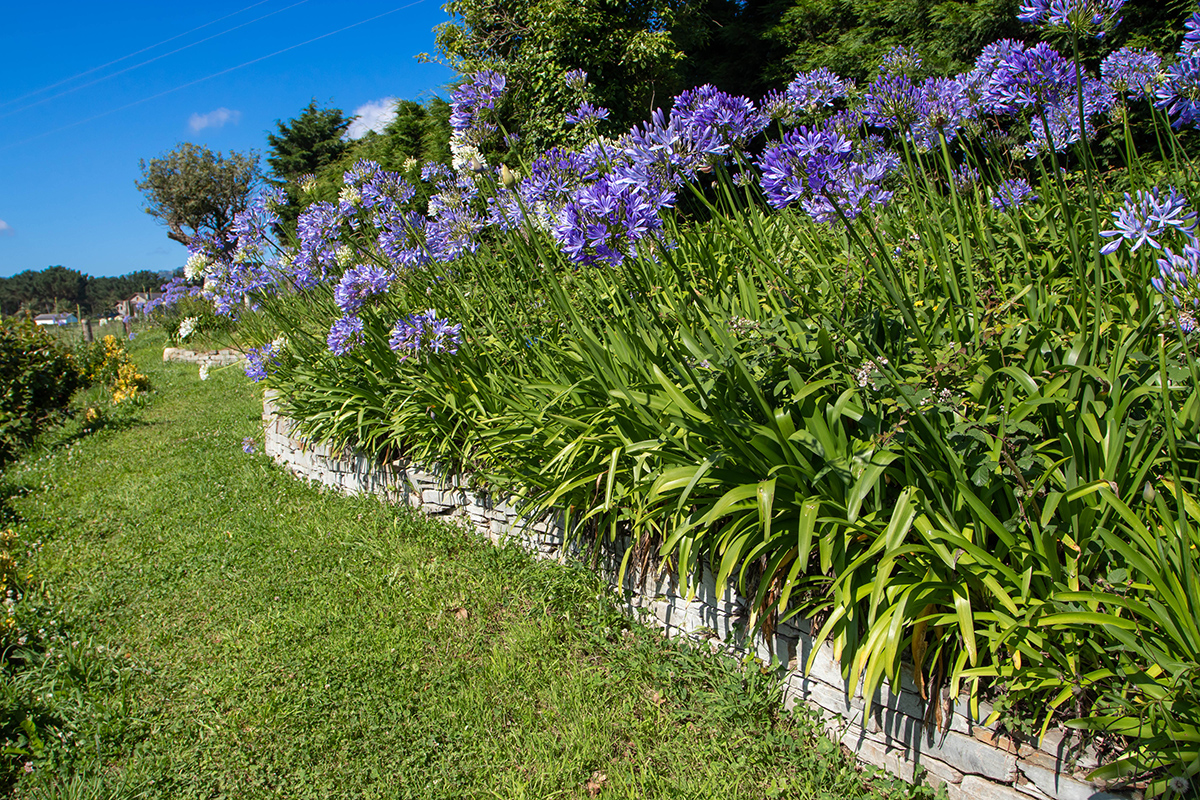Stunning Agapanthus: Enhancing Your Yard's Elegance
Stunning Agapanthus: Enhancing Your Yard's Elegance
Blog Article
Understanding the Art of Agapanthus Care: Crucial Actions for Healthy And Balanced Growth and Vivid Flowers
In the realm of cultivation, the farming of agapanthus stands as a rewarding venture for those that seek to nurture these classy blooming plants. With their striking blooms and elegant vegetation, agapanthus has actually caught the interest of gardeners worldwide. Nevertheless, achieving optimal development and vibrant blossoms requires a nuanced method that incorporates numerous important steps. From choosing the appropriate range to grasping trimming techniques, the trip in the direction of cultivating thriving agapanthus plants is diverse and holds the essential to opening the complete capacity of these agricultural gems.

Choosing the Right Agapanthus Variety

When selecting the appropriate Agapanthus selection for your yard, consider elements such as climate suitability, blossom color, and growth practice. Furthermore, take into consideration the climate in your region to ensure the Agapanthus selection you pick can thrive in your certain conditions. Comprehending the growth routine of different Agapanthus varieties is critical for correct positioning within your garden.
Suitable Planting Problems
Taking into consideration the optimum environmental demands is essential for effective Agapanthus farming. Agapanthus plants are sensitive to cold temperatures and should be shielded from frost during winter season months.
To guarantee healthy and balanced growth and lively blossoms, plant Agapanthus light bulbs at a deepness of concerning 2-4 inches and space them 8-12 inches apart. Including raw material, such as garden compost, to the dirt can improve drain and fertility, promoting durable origin development. Mulching around the base of the plants aids maintain dampness and reduces weed development. Regular watering is important, especially during the expanding period, to maintain the dirt continually damp yet not waterlogged.
Watering and Feeding Tips
Preserving appropriate wetness degrees and providing important nutrients are crucial elements in the care routine for Agapanthus plants. It is vital to strike an equilibrium when it comes to watering Agapanthus. If overwatered, these plants like constantly damp soil yet are susceptible to root rot. Throughout the expanding season, water deeply as soon as a week, making sure the dirt is well-draining to stop waterlogging. In hotter environments or throughout durations of drought, more constant watering might be essential to maintain the dirt uniformly moist. However, decrease watering in the wintertime to avoid waterlogged problems.
Fertilizing Agapanthus is necessary for promoting healthy growth and respected blooms. Use a balanced plant food, such as a 10-10-10 formula, in the early spring as brand-new development arises. By adhering to these watering and feeding tips, you can guarantee your Agapanthus plants thrive and produce vivid, lasting blossoms.
Trimming Techniques for Agapanthus
Trimming Agapanthus plants at the proper times and with proper techniques is vital for keeping their health and wellness and promoting ideal growth and blooming. The perfect time to prune Agapanthus remains in late winter or early spring before brand-new development emerges. Begin by eliminating any dead or yellowing leaves near the base of the plant. Cut them as close to the ground as possible without damaging the arising shoots. find out
For flowered stems, wait till the blossoms have withered and after that cut them back to the base. This not just cleans the plant's look yet likewise motivates the advancement of brand-new flower buds. Deadheading spent flowers can also reroute the plant's energy right into creating more blooms instead review than establishing seeds. Nonetheless, if you wish to gather seeds for propagation, leave some flowers to mature and completely dry on the plant.
Keep in mind to use tidy, sharp devices to make exact cuts and reduce the danger of presenting illness. Agapanthus. Regular trimming will certainly help keep your Agapanthus looking neat and healthy while ensuring a plentiful display of beautiful blossoms
Managing Typical Parasites and Conditions
After guaranteeing appropriate trimming techniques for Agapanthus, it is necessary to resolve common pests and conditions that can influence the wellness and vigor of these plants. Agapanthus plants are generally hardy however can still come down with specific problems. One usual pest that affects Agapanthus is the Agapanthus gall midge. This tiny, orange fly lays its eggs in the foliage, bring about distorted growth and blossom buds that fall short to open up. To combat this pest, prune and damage any affected plant parts and think about making use of insecticidal soap.
An additional usual issue is fungal leaf spot, which presents as dark sores on the leaves. To avoid fungal diseases, ensure great air flow around the plants, avoid overhead watering, and remove any infected fallen leaves promptly. Additionally, Agapanthus plants can struggle with root rot if they are planted in badly draining dirt. To prevent this, plant Agapanthus in well-draining soil and avoid overwatering. By being cautious and taking prompt activity against insects and conditions, you can assist your Agapanthus plants flourish and create vibrant blooms.

Final Thought
To conclude, understanding the art of agapanthus treatment includes picking the right selection, providing suitable growing conditions, appropriate watering and fertilizing, proper pruning strategies, and addressing usual bugs and illness. By complying with these important steps, you can make sure healthy development and dynamic blooms for your agapanthus plants. Bear in mind to on a regular basis keep an eye on and preserve your plants to promote their total well-being and longevity.
To make sure healthy growth and lively blooms, plant Agapanthus bulbs at a deepness of about 2-4 inches and area them 8-12 inches apart. By adhering to these watering and fertilizing tips, you can guarantee visit this website your Agapanthus plants grow and generate dynamic, resilient blooms.
One usual bug that affects Agapanthus is the Agapanthus gall midge. In addition, Agapanthus plants can endure from root rot if they are grown in improperly draining soil. By following these essential steps, you can make certain healthy development and vibrant blossoms for your agapanthus plants.
Report this page